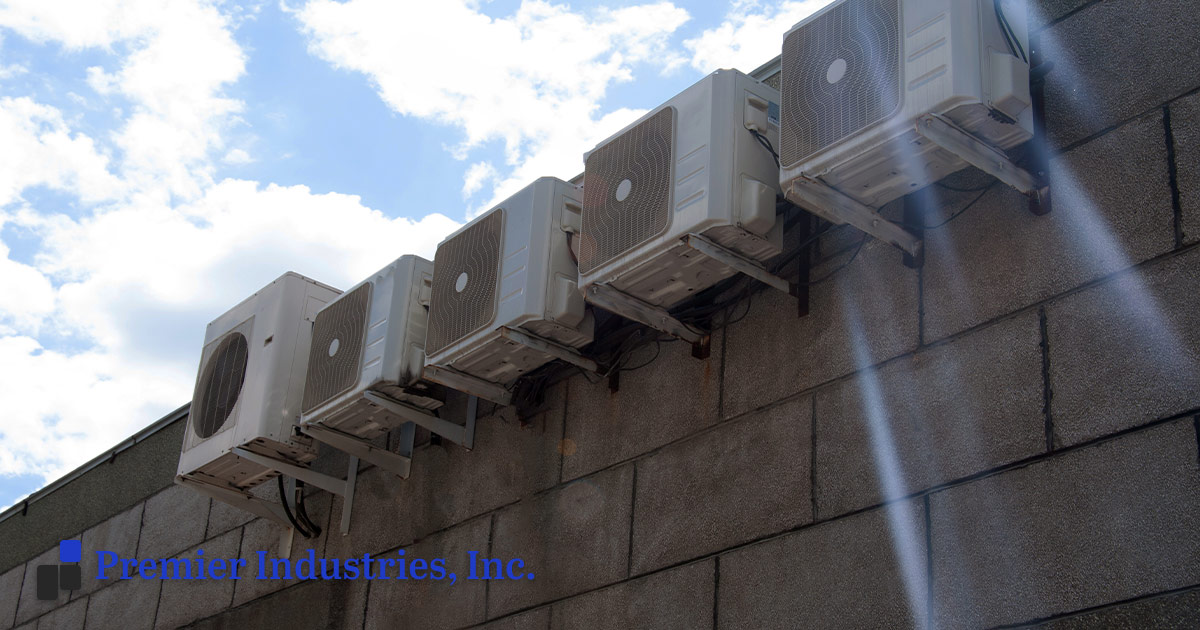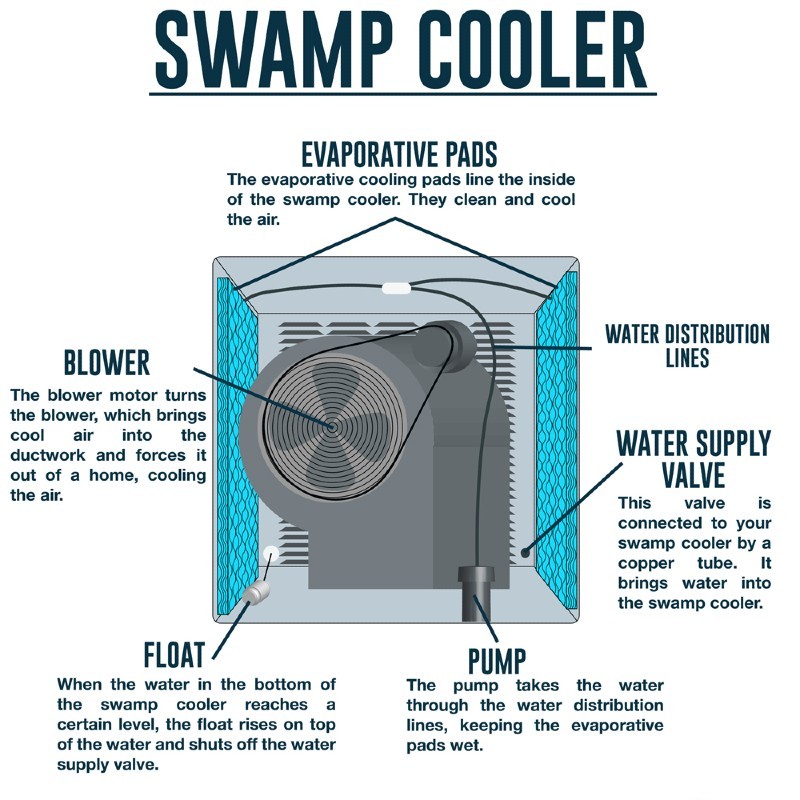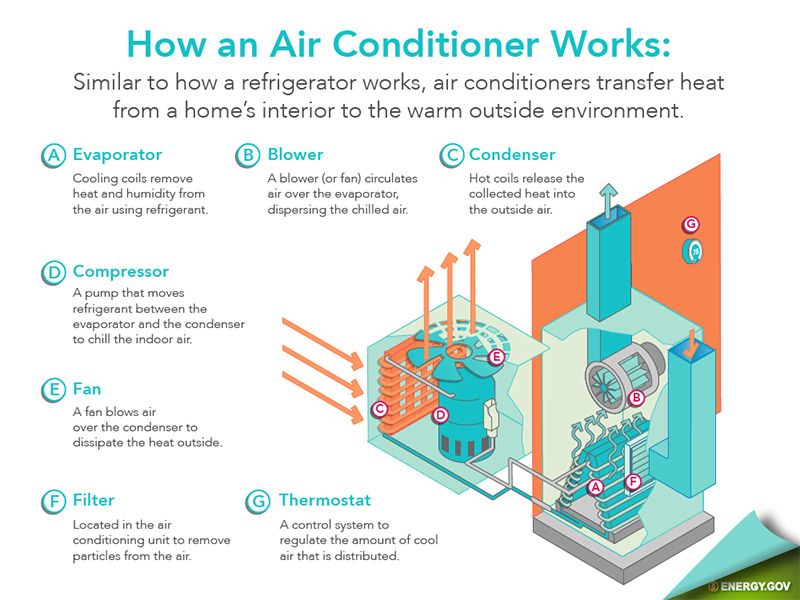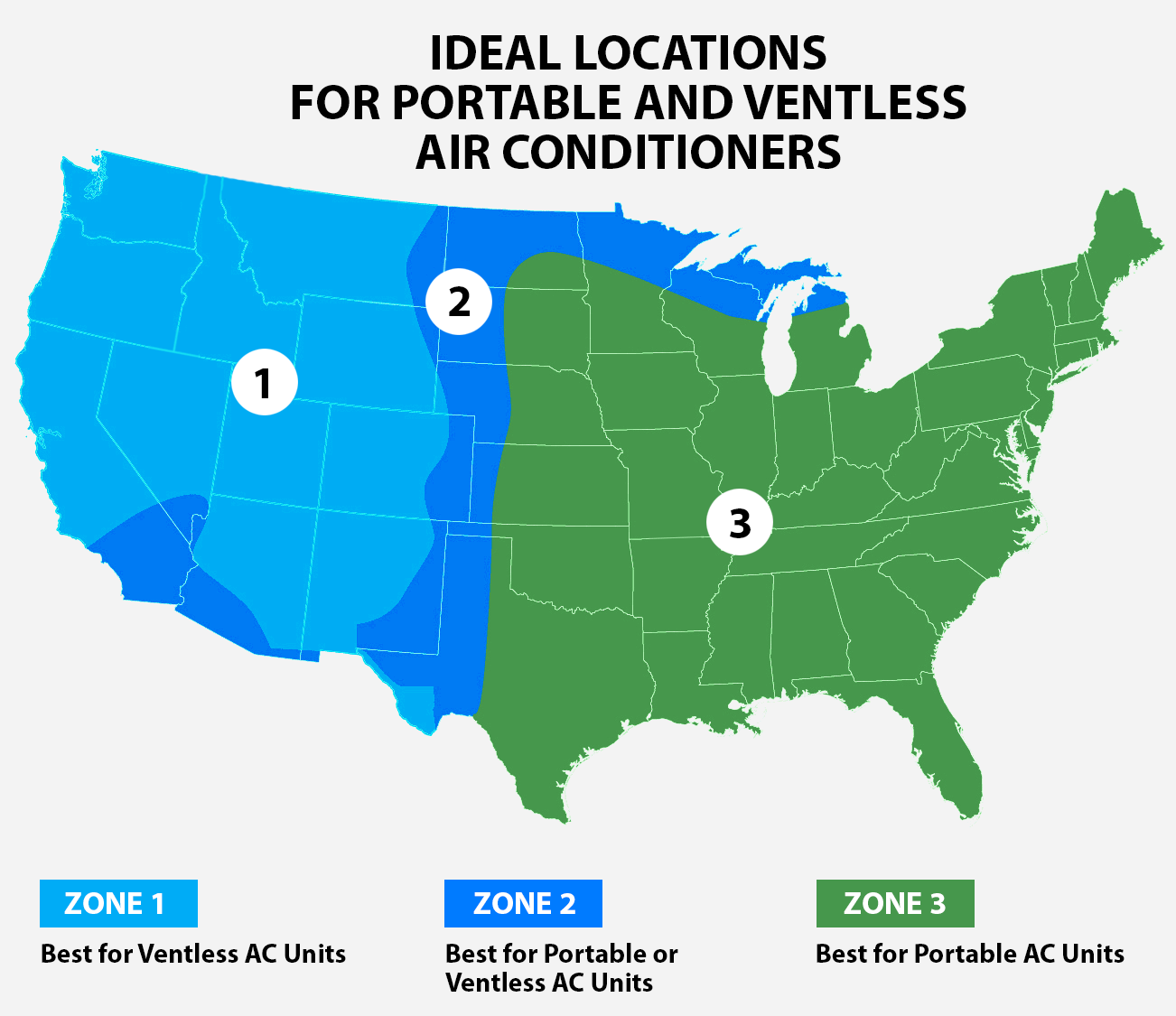
Swamp Cooler vs Air Conditioner, Which One is Better?
March 25, 2020 6:10 pm Leave your thoughtsMost of us look for innovative ways to keep cool during the hot summer months. However, many of us are also familiar with the high cost of running our air conditioners to keep chill and get relief from the heat.
In an attempt to offset the expensive cost of cooling our spaces, we may be motivated to look for less expensive alternatives. There are a myriad of different products that promise to chill an area, less the cost.
Imagine all the As Seen on TV commercials and their presentation of products that promise to help you beat the heat. The number of products that promise relief from the heat can make it hard to determine what works and which product would be best for us. It can be confusing to navigate.
However, a thorough understanding of the differences between swamp coolers and air conditioners makes it easier to determine which type of system will work best for us.
How Swamp Coolers Work
What are swamp coolers? Swamp coolers go by many different names. They are often referred to as swamp, swamp boxes, desert, and wet, coolers. These work by eliminating heat through the evaporation of water. This is powered by the fact that water can get rid of a substantial amount of heat during the evaporation process.
The temperature in a room can be decreased during the transition from liquid water to vapor. This type of refrigerating can be particularly beneficial in hot dry climates because, as the airflow is cooled and much-needed moisture is released as well.
Swamp units usually expend less energy than conventional conditioners which can make them a more practical choice in hot dry climates.
The effectiveness of these types of devices is largely dependent on relative humidity. This is one of the reasons why evaporant coolers work well in dry hot climates. However, these types can sometimes be effective in more humid climates if indirect evaporant chilling is utilized.
This method cools the surrounding atmosphere without adding humidity.

How Air Conditioning Works
What are air conditioners? Air conditioners are electric refrigerant-based units that use a fan to blow chilled airflow into a room. This refrigeration rapidly decreases the temperature in the room and dehumidifies at the same time. Some AC units are made with chemicals called desiccants which eliminate moisture from the atmosphere.and some AC units work by storing heat in subterranean pipes.
The key chemical in these is the refrigerant used to cool or condition the airflow. These devices utilize a process called vapor-compression in cycles. These cycles create an exchange between the refrigerant which causes gas and liquid to transfer heat outside of the area being cooled. airflow conditioning units utilize refrigerants to absorb heat and humidity from space and can come in many forms.
Small window units cool a room using this same process. Large central units use the same process but deliver refrigerated airflow to different areas through ducts and vents.
Window units release condensation outside of the window as they get rid of heat. Air chilling devices use refrigerated airflow and dehumidifiers to chill a room regardless of whether or not a small window unit is being used or a large central unit.
Other types of conditioner units include chillers attached to terminal chilling equipment and variable refrigerant flow terminals which use heat rejection equipment on its condenser side and a fan coil unit.

Which One is Better for Me?
This, of course, is the most important question when it comes to determining what type of cooling system you should invest in. This answer is dependent on several factors. Both evaporant and conditioning units can be effective at chilling. However, how effective each type of system is, depends on the climate. Evaporative coolers are highly effective at reducing heat and chilling a room in hot dry climates. This is also true for industrial and commercial units.
These not only chill a room but also help moisten and condition hot dry airflow as well. They pump moisture and coolness into a room to eliminate hot dry temperatures.
Conversely, conditioning units work in just about any climate because the way airflow conditioning devices chill a room doesn’t rely on a particular type of environment to produce effective results. However, they consume a lot of energy. They are a better choice in humid climates because they remove humidity from the atmosphere, as well as blow chilled airflow into a closed room. Heat is removed and released outside of the room. Depending on the type of AC unit you have, this method can be accomplished in different ways. However, the concept is the same. Both a window unit and a central AC unit do the same thing.
However, the exact way each type of unit works can vary. Window units are designed to chill small areas whereas a central AC unit is designed to cool a large area by pumping refrigerated airflow through ducts and vents in a building or a residential home.

Swamp Coolers vs Air Conditioners
When you consider both evaporative systems and air conditioners, it’s not difficult to determine which system will be most effective for you. Moist humid climates won’t benefit from a chilling system that pumps moisture into the surrounding atmosphere because the water won’t evaporate fast enough to adequately cool the area. You would probably accomplish little more than creating an atmosphere that’s even more humid. This is why the eastern states as well as states in the far southeast, like Florida, wouldn’t benefit from an evaporative cooling system.
A conditioner would be a more effective choice because it’s not dependent on climate constraints to be effective. Airflow conditioning units do require a lot of energy. However, they effectively remove heat and humidity from closed spaces.
Areas known for dry hot weather conditions can be excellent choices for evaporant cooling systems. The dry heat responds well to a water vapor system because water vapors evaporate quickly in these arid climates, effectively bringing the temperature down and adding needed moisture to the surrounding atmosphere.
If you live in the southwest or areas like Arizona and California, evaporative units can be a cost-effective option for you. These systems don’t require a lot of electricity and the climate makes the use of these systems both
effective, economical, and pragmatic.
Evaporative Coolers You Can Rely On
When it comes to chilling a space during the hot summer months, many of us want to achieve this without going broke. As a result, we may consider other alternatives to keep our homes comfortable by analyzing the differences between air conditioners vs. swamp cooloers. Residential evaporative coolers do provide an inexpensive alternative to conventional options. However, these units aren’t as effective in climates that are humid and hot.
The process that evaporative units use to cool a room utilizes water vapor which would do little more than push more humidity into a room in a hot and humid climate. This is a key reason why evaporative units are most effective in dry hot climates because they can pump moisture into the airflow and cool a room down. Air conditioners are the best option in hot humid climates because these units dehumidify and cool the surrounding atmosphere using refrigerants.
Premier Industries Inc. understands how powerful the right chilling unit can be in your home or office. We take pride in designing efficient effective evaporative cooling systems to meet the needs of our customers. Give us a call today for a free consultation.
Categorised in: Air Coolers
This post was written by Mike Nicolini
